– Welcome to University Roundtable. I’m Jake Smith, UW-Madison Secretary of the Academic Staff and a member of the Roundtable planning committee. Before we start today’s presentation, I’d like to thank our sponsors, the Office of the Chancellor, the Secretary of the Academic Staff office, the Office of Learning and Talent Development, and the Wisconsin Union. I’d also like to thank our partners at PBS Wisconsin for making this recorded version possible. It’s my pleasure to introduce today’s speaker, Kacie Lucchini Butcher. Ms. Lucchini Butcher is the director of the Public History Project at UW-Madison. She’s a public historian whose work is, as she says herself, dedicated to building empathy, helping communities write their history, and to advancing social justice and social equity. Her professional research interests are focused on race in 20th century United States with respect to housing inequity, urban planning, and highway construction, as well as the ways in which race, class, and gender are embedded into built environments. Since its inception in 2019, the project has researched over 150 years of history in order to give voice to histories of racism and discrimination at the university.
Here to show us how the project helps us all reckon with our history, please welcome Kacie Lucchini Butcher.
– Thank you, Jake, for that introduction. It is my pleasure to be here today, talking to you about the UW-Madison Public History Project. The project is a multi-year chancellor initiative to uncover and give voice to the histories of exclusion and discrimination at UW-Madison. The project began because of this photo in the 1924 Badger Yearbook. In the 1920s, there were two organizations on campus that bore the name of the Ku Klux Klan. One of these organizations was officially associated with the Klan and one was not. The Kappa Beta Lambda Fraternity, also known as KBL or Klan Be Loyal, was officially associated with the Klan. A Milwaukee Klan newspaper praised the group’s commitment to the Klan principles of, quote, “white supremacy, restricted foreign immigration, and law and order. ” The group pictured here, the Ku Klux Klan Honor Society, was not formally associated with the Klan, though they chose to take the name, which signals an identification, or at the very least, no meaningful discomfort with the widely-known violent actions of the Reconstruction-era Klan.
The research on the two UW-Madison Klan groups was originally published in 1993 in the Wisconsin Magazine of History. However, following the violence in Charlottesville in 2017 and the #RealUW campaign, Chancellor Rebecca Blank asked a committee of historians and campus community members to study the Klan’s presence on campus and to report their findings to the university. The report was released in 2018 and included a list of recommendations, one of which was more of a question. It asked, “By focusing so closely “on the history of the Klan “and on this small period in the university’s history, what other histories are we missing?” It was this question that created the Public History Project. This is part of our mission statement. “The UW-Madison Public History Project “aims to recover and acknowledge “the history of exclusion on campus “through the voices of those who experienced and resisted it. ” We began researching in 2019 and have focused our research on the following areas: housing and campus life, academic life, student organizations and activities, and athletics. We’ve researched over 150 years of history and we cover discrimination writ large across the entire history of the university. We not only look at discrimination against different racial and ethnic groups, but also discrimination against LGBTQ folks, folks with disabilities, and religious discrimination. The Public History Project has first and foremost been a research project.
Many of the histories we aim to cover have not been researched before, meaning our team of student researchers have often had to start from scratch. While this has often been an exciting process, it has also been a challenging one. There is a common misconception that if you have a question, there must be an answer somewhere. In our modern age, most of my students would tell you that it’s probably on the internet. But if you know anything about history or how research is done, you might assume that there’s also a book or a scholarly article about it. And if there isn’t a work of scholarship, then there must be something in the archive that you could point to. But that couldn’t be farther from the truth. Even the most well-organized, well-funded archives are missing information. It’s impossible for us to keep everything ever created in the past. So gaps in the archive are a given.
That being said, certain types of documents are easier to preserve and keep than others. Take for example, chancellors’ files. Chancellors tend to have staff, people that can help them organize papers, documents, photos. If this kind of compilation happens, it makes it easier to pass on to an archive. On the opposite side, you have student groups. Leadership often changes. Students are only here for a short period of time. Record-keeping is often sparse. How then do these records get into the archive and how do these histories get preserved? These are only some of the issues faced by archives. There is also the philosophical question, what do we preserve and what is worthy of preservation? But what is often more pressing is the organizational and financial questions.
Who will process, catalog, and digitize this information? Where will it be stored? How will it be stored? How will the materials be accessed and used? Even if you have the staff, the documents, the organizations, and the resources, you can still run into other issues. All of this creates research challenges, particularly for a project like ours. To meet these challenges, our project has supplemented the archival record with oral history interviews. Oral history interviews give us a chance to record history straight from the source, right from the people who experienced life-changing moments and events on campus. It’s an intimate way to collect history and one that gives us an opportunity to record the past from a deeply personal perspective. But more than just documenting, oral history interviews allow people to tell their history in their own words. And that’s a powerful process, both as recorders of history and those who study it. To give you a sense of the scale of our project, in our first two years between 2019 and 2021, our graduate and undergraduate student researchers accessed over 170 cubic feet of archival material. That’s about 30 bathtubs’ worth of paper. We’ve gone through 168 volumes, 79 volumes of the UW-Madison Badger Yearbook, and 89 volumes of The Daily Cardinal, the campus newspaper.
Those are split by year, so that’s about 45 years of the student newspaper and about 80 years of the Badger yearbooks. We’ve completed 114 oral history interviews that account for over 148 hours of audio. So what is all this research for? The entirety of the project will culminate in a physical exhibit at the Chazen Museum of Art that will be on display between September 12th and December 30th of 2022. This exhibit will allow us to bring these histories to life in a physical space. We’ll have photos, objects, archival materials so that people can physically engage with the work of the project. It will be an exciting opportunity to bring the research together and to show many of these stories and materials to the public for the first time ever. The exhibit will also be formatted into a digital exhibit website for people who are unable to attend in person. The website will hold additional stories that can’t fit into the physical exhibit, and it will house multimedia such as video and oral history interviews, as well as digitized archival materials. Part exhibition and part archival collection, the website will also act as a long-term repository for this history, allowing people to access it more easily. The project will also continue to host events and public programming that allow people to more deeply engage with this history.
Lastly, and maybe most importantly, as an educational institution, we have an obligation to educate. The exhibit and the lessons learned from the history in the exhibit need to find their way into the classroom. So one of our central components will be compiling a suite of curricular materials that allow students and others to more deeply engage with this history throughout courses and other learning opportunities. So these are the products that the project is expected to deliver. But what is the larger point of all of this? Why do an exhibit at all or create curricular materials? As a project team, we have settled on a framework of reckoning. Reckoning with our history, reckoning with our participation, reckoning with how our past may be affecting our present. This is the lens through which we view our work. But what does it mean to reckon with something? What does it mean to reckon with our history? This is something that our project staff thinks about a lot. Here, I have the dictionary definition of reckoning, and I’ve come to view it as a step-by-step process. The first step is the action or process of calculating or estimating something.
We’ve been researching for over two years now, and we are able to see where discrimination happened and who it happened to. The second step is our view and our opinions and our judgments. When we release this history, when the public experiences it and learns from it, we have a lot of feelings and opinions and judgments on that history, which is a natural part of the historical process. It’s in this last step, step three, a bill or an account or a settlement, that I believe the true power of history lies. It is a question that gets to the core of why we study history at all. As a project, we believe that the process of reckoning with our history is not merely a process of researching and documenting, but must also be a process of change. How will we learn from our past to create a better future? If you came to visit the project headquarters in the humanities building on UW-Madison’s campus, you would see this. It’s a little cluttered and a little chaotic, I’ll admit, but when you’re researching 150 years of history, things tend to get a little messy. Every one of these white cards represents one story, something we feel is important to tell. So in this room, we spend a lot of time running through the exhibit and other project materials and moving things around.
Trying to figure out a flow, but also trying to figure out what we want audiences to take away from the experience of learning this history. One thing became pretty clear for us right away. There was one through line to all these histories, all these stories, all these experiences. And that is resistance. When people think of protest and resistance at UW-Madison, they most commonly think of the turbulent 1960s, where protests on campus were commonplace. There is a common misconception even that protests at UW-Madison only began in the 1960s. But in fact, UW students have long been organizing, protesting, and voicing their views on issues important to them. I would argue that one of the earliest protests at UW-Madison centered around one of UW’s most essential ideas, sifting and winnowing. As a gift to the university, the Class of 1910 gave the famous sifting and winnowing plaque as a class memorial. The plaque has wording that was taken from a Board of Regents meeting on September 18th of 1894 in support of Professor Richard Ely, who was accused of being a socialist for his pro-union activities.
The regents, thinking that students had been influenced by radicals, rejected the gift, and the class took their case to the local newspaper. While the students didn’t march or hold signs, something that we typically see as protest activity, they immediately began organizing. They wrote letters to state representatives, got the support of other alumni, and created a storm of bad press for the university, all of which worked to change the administration’s mind. The plaque was installed in 1915 and still sits on Bascom Hill today. I start with this story because when you begin to think of resistance outside of the bounds of protests and picket lines, small acts become just as important as big ones. During the same period that students were organizing in favor of sifting and winnowing, there were other small acts of resistance. The culture of UW-Madison for some of the earliest students of color was surely a challenge. It would continue to be that way for decades to come. We now have a picture of the university where students are constantly being entertained. Events and student groups, there’s always something going on.
But in the earliest years of the university, opportunities to build a social life were much more limited. Popular campus events like prom were segregated by race, and other widely-attended campus events like theater performances were centered around minstrelsy. By the end of the 19th century, blackface minstrelsy was the most popular form of entertainment in the United States. So it’s unsurprising that it made its way to our campus. From its earliest conceptions, minstrelsy relied on racialized depictions that dehumanized Black people by portraying them as incompetent and idiotic. Rather than excusing the racist depictions of Black people as harmless play from a bygone era, it’s important to understand the long-term impacts of these stereotypes. Through the stigmatization of those that they deemed other, white participants attempted to secure their own positive identity and power through the practice of minstrelsy. With the wide availability of sheet music and how-to guides, college fraternities and student organizations across the United States began to host minstrel shows as a form of fundraising. At UW-Madison, this practice would continue for more than a century. Many clubs hosted minstrel performances, but the most well-attended and financially successful shows were the Wisconsin Senior Engineers’ world-famous minstrel productions, which took place from 1903 to 1920.
The shows were so successful that President Van Hise praised them. He said, quote, “I congratulate you on the success of this undertaking. “It shows your versatility to be able to adapt oneself to all sorts of men and surroundings. ” Although it lost its popularity after the Civil Rights Movement, blackface continued to appear on campus in the form of racist fraternity parties throughout the 1980s. Another popular and important event from this time period was the annual Pipe of Peace ceremony, an event where white students dressed as Native peoples and passed a peace pipe between the junior and senior class. It’s an event which lasted nearly 50 years, and it happened at the same time that Native people were being forcibly removed from their homes and sent to boarding schools in an effort to separate them from their culture, language, and traditions. This was the culture of UW-Madison. It was a culture of discrimination and exclusion. It wasn’t hard to locate in the archives or to find in the historical record. It was commonplace occurrences like this that made it really clear that campus was not welcoming or accepting of non-white students.
Many student organizations were also segregated by race. Seen here are the Anglo-American Club and the Kappa Beta Lambda Fraternity, also known as KBL or Klan Be Loyal. Other clubs, though they didn’t outwardly have rules against accepting members of color, made their groups known to be unwelcoming. Take for example the Dixie Club, a club devoted to Southern heritage, which is depicted annually with blackface caricatures in the yearbook, or the Commercial Club, a business club which often used antisemitic cartoons. As students of color were rejected from prom, from honor societies, from student organizations, and from other forms of social life, they continually created their own spaces. When this is the environment, existence is resistance. Here on the screen, I have a program from the Chinese Students Association, an active student group on campus that hosted dances and other cultural educational nights. The center image is from an early yearbook page for the International Club. Though it was originally conceived of as an intellectual club, it quickly became more socially-oriented. The university did not yet have an International Student Support Services office, so the International Club students took on this role of welcoming new international students to Madison.
They often helped them acquire housing and helped them settle into their classes. Soon, other clubs cropped up that helped students connect with their community, like this yearbook page for the India Association demonstrates. So there were opportunities where students of color found and formed community for themselves outside of these white-dominated spaces. Fraternities were another particular site of segregation. Many fraternities were mandated to maintain racial segregation due to discriminatory clauses in their charters. These charters existed from the earliest days of Greek life, and they barred people of color and Jewish people from joining these organizations. By the 1920s, the segregation was so intense that Jewish students created their own fraternities and sororities. The first was the Phi Sigma Delta Fraternity and the Alpha Epsilon Phi Sorority in 1921, closely followed by Zeta Beta Tau in 1922. These organizations and their formations were immediately met with ire from university administrators. When Zeta Beta Tau tried to form, they were originally rejected.
The Dean of Men, Scott Goodnight, claimed that, quote, “There have been heretofore “no national organizations on our campus which confined their membership to any given race or creed. ” It was quite the contradiction that they had formed to escape discrimination, but were often not allowed to form because of the claims that no discrimination existed on campus. ZBT was eventually approved, but there’s archival documentation that shows that Jewish fraternities were watched more closely by the university to make sure that they were integrating non-Jewish students. That same watchful eye was not turned towards other primarily white fraternities. It was clear that the discriminatory clauses were not an issue for Jewish fraternities though. Weatherf “Sonny” Sykes became the first Black man to enter an otherwise all-white fraternity at UW-Madison when he joined the Jewish fraternity Phi Sigma Delta in 1949. Jewish fraternities did not limit membership by race or religion, most likely because of the history of discrimination that had inspired their formation. But Sykes’ pledging became so controversial that Phi Sigma Delta released a letter to the public explaining their decision. They noted that Sykes was unanimously accepted by the fraternity, and they said that he is, quote, “Just another Phi Sig pledge. We can look at him no other way.
” Following World War II, fraternities and sororities went through a huge growth period on campus. 24 fraternity chapters were active on campus in January of 1947, compared to only six chapters that continued to operate during wartime. As of a 1952 report, 30% of the UW-Madison undergraduate population belonged to a Greek-letter organization. That’s more than double the 14% of students who currently are affiliated on campus. Out of these 24 fraternities, 14 had discriminatory clauses in their charters. As public opinion on campus shifted towards supporting integration during the 1950s, students and faculty began organizing for an end to discriminatory clauses in Greek-letter organization charters. After mounting media attention, the UW-Madison Board of Regents and faculty decided to take action. In 1952, they formally approved the 1960 Clause, which mandated that all university-approved housing units, including fraternities and sororities, remove discriminatory language in their foundational documents by July of 1960. The Interfraternity Council immediately disagreed, declaring that, quote, “The most desirable and effective method “of the removal of restricted clauses “is the action of individual fraternities without any coercive threat. ” Fearing the removal from campus, Greek-letter organizations did begin working with their national organizations to remove discriminatory classes.
All but one organization met the 1960 deadline. And by July of 1961, no Greek-letter organizations on campus retained discriminatory language in their charters. It took over 14 years from the initial organizing efforts until the last discriminatory clause was removed from UW-Madison’s campus. But integration and practice was slow to take root. While formal discriminatory clauses were no longer written into organizational documents, Greek-letter organizations were still free to accept or deny individual members. As the Greek section of the 1960 Badger Yearbook stated, quote, “Selective membership was a way to find companionship on a campus that often felt lonely. ” Fraternities and sororities remained highly-segregated spaces. Just as Jewish students began to form their own organizations, so too did Black students. The first Black Greek-letter organization was the Black fraternity Kappa Alpha Psi, which was accepted in 1946, closely followed by the Alpha Phi Alpha fraternity. In part, due to the lack of Black students on campus, these organizations remained small and few until the 1970s.
When presented with backlash for their anti-discrimination efforts, the university had to distinguish a difference between the racism of white fraternities and sororities and the cultural significance of predominantly Black fraternities and sororities. In the justification, the university stated that, quote, “They believe we jeopardize the college experience “of our present Negros “with the long-range goal of integration “by not accepting “the predominantly Negro fraternities. “Why try to create other means of integration, “which are often artificial and rejected, “when an existing system can assist us in obtaining our objectives?” Throughout the years, these organizations popped up and disappeared as their numbers either dwindled or grew. The 1960s found many of them reestablishing and growing in prominence on campus. I wish I could show you more information, more photos, more documents, but there are shockingly few archival materials that document these groups. It really reflects the relationship that these organizations had with the university, which is that they didn’t. The university allowed them to form and then left them alone. There’s very little evidence of any kind of institutional support for these organizations. But it is hard to understate just how important Black Greek-letter organizations are to Black students and to campus. They provided opportunities for safety and community, as well as social opportunities for students.
Black Greek-letter organizations were instrumental in creating what we now know as Multicultural Homecoming, a tradition that continues today. Outside of social organizations and events, students were quick to critique the university and institutions within the university that were harming students. One of the earliest student organizing campaigns was focused on the University of Wisconsin-Madison Police Department. The UWPD was established in the mid 1930s to patrol campus and protect the physical infrastructure of the university. Their role was largely to look for unlocked doors and patrol for vandalism. Over time, this role slowly expanded to include investigations. Within less than five years of the department being established, there were already serious concerns being raised by the Madison community about the behavior of one UWPD officer in particular, Officer Joseph Hammersley. Hammersley’s archival record paints a clear picture of a man who could not be controlled by the university and who regularly acted aggressively, belligerently, and with impunity. His behavior got so out of control that the university ended up completely dismantling and reorganizing the police department within 15 years of his hiring. This reorganization came almost entirely from the concerted efforts of student organizers, who gathered complaints against the UWPD from faculty and staff and Madison community members.
And it created a lot of bad press for the university. While after the UWPD organization Officer Joseph Hammersley was given less power, he was still an active member of the force who went on to continue perpetuating harm across campus. Hammersley’s harm can maybe be most clearly seen through the gay purges at UW-Madison. Through the first half of the 20th century, the university regularly punished or expelled male students they believed to be participating in same-sex sexual acts. There were two major purges in 1948 and in 1962. However, students and faculty and staff who were suspected of being gay were almost constantly being punished at the university outside of these two notable and large purges. A quick note on language. The terminology “gay purge” is what these mass expulsions and firings came to be known as in the queer community. The first purge began in 1948 when two men were found in an intimate position in a car on campus. They were discovered by Officer Joseph Hammersley.
Hammersley, along with local Madison police and the Dane County District Attorney led a months-long investigation into what they called a homosexual ring in the Madison community. In the end, over 13 men were arrested, charged, and punished. For those that were students at Madison, the punishment put forth was not only handed out by the state of Wisconsin through criminal charges, but also by the university. Right before the 1948 purge began, UW-Madison hired its first female doctor in the medical school, Dr. Annette Washburn. Her specialty was neuropsychiatry, and she was immediately asked to serve on the student conduct committee to help develop a policy for how to handle students the university believed to be gay. It’s important to note that these purges were not performed by individual actors at the university, but instead multiple departments and units worked together in concert to punish people that they believed to be gay. The UWPD arrested, interrogated, and assisted Dane County in legally punishing the men. The university medical school used existing science to force gay students into conversion therapy under the threat of further punishment, and the university administration encouraged this therapy and continued to punish students by expelling them or rescinding their degrees or scholarships. All three worked together to make this purge happen.
But not everyone agreed with this. There’s a common misconception that everyone at the time must have held these views, but many spoke out against the purges. This is a quote from an anonymous opinion article. “Must homosexuals go on being treated in this day and age “as if they were common criminals? “How can intelligent citizens of the state and city “stand by silently and see reasonableness and justice “made a mockery in the hands of prosecutors and muck-rakers? “This witch hunt and this witch burning “is an act of the most vicious bigotry. “There are ways to handle cases of this sort, “but they are not through the open court and most certainly not in the press. ” There’s other evidence that people physically tried to stop the purges. This may be one of our most interesting archival finds, a piece of toilet paper. During the purge, the UWPD had set up sting operations in university bathrooms. A man wrote this note, hoping to protect a fellow campus community member from being targeted. It states, “Hammersley has a campaign on “at present all over campus.
Better be careful. ” They unknowingly passed the note to Hammersley, which is how we found it in a police report in the archives. Subsequently, the man was interrogated and charged with disorderly conduct. The charges were later dropped. But I think it demonstrates the existence of a whisper network. People on campus knew about these purges and were trying to protect one another. One of the best examples of how difficult it was culturally and socially to live in Madison and to attend UW-Madison can be seen in the history of housing discrimination. But what becomes clear in the history of housing discrimination on campus is just how intensely students organized to end it. Based on what we know currently, university students have been fighting against housing discrimination on campus since the late 1920s, with varying degrees of success. But from 1945 until the late 1960s, they created a cohesive organizing campaign that spanned multiple generations of students.
The main source of contention was the university housing system, which, prior to the 1940s, was largely decentralized. The university kept lists of approved landlords who met building code standards and who segregated by gender. However, these landlords were private property owners and were therefore free to discriminate. When the university began constructing dorms, some of this discrimination was mediated, as students had a theoretically discrimination-free environment. However, we know that this only changed the face of discrimination on the surface, as students of color continued to face instances of racism in university-operated dorms as well. The first high profile case of housing discrimination at UW-Madison was the case of Mildred Gordon, a Jewish woman who was kicked out of her apartment. She was originally told that she had a room, but when she arrived, the landlord claimed that it was full. She was required to fill out an application indicating her religious affiliation. The dorm claimed that they did not have a policy barring Jewish residents, but we know that discrimination against Jewish people in housing was common in Madison. This antisemitism was not limited just to campus, but was present all across the city, meaning that students and faculty and staff who were Jewish faced challenges not only on or near campus, but in the city as a whole.
Mildred Gordon tried to sue, claiming that the landlord violated the contract of their agreement. The case was eventually privately settled. Though it’s important to note that Mildred did not sue on the grounds of discrimination because it was legal for landlords and homeowners to discriminate during this period. These cases were extremely common. They happened so frequently that I would need at least 20 slides to detail them all to you. But Mildred’s case was the first that made headlines and set a standard for documenting these types of cases. In October of 1944, Arthur Burke arrived at the University Club on UW’s campus. At the time, the club functioned as not only a social gathering space, but as a lodging house with accommodations for faculty and graduate students. He was going to spend the next year on campus on the Adams Fellowship as a graduate teaching assistant in the English department. He arrived and moved into his room.
The next day he was asked to leave because, quote, “Strong sentiment among club members against Negro residents. ” Burke was offered alternative residence at the YMCA but rejected the offer, calling it, quote, “An affront to have been offered and craven to have accepted. ” Burke later told history department professor Merle Curti of his eviction. Outraged, Curti partnered with Helen C. White and Paul Clark, as well as the United States Student Assembly, the Negro Culture Foundation, the Wisconsin NAACP, and a coalition of 185 students to lobby the University Club to end their discriminatory policy. The issue rose to such attention that even W. E. B. Du Bois was aware. After no response from the University Club, Curti and White decided to confront them and demand a response during a private luncheon being held by club board members.
The University Club decided to hold a referendum of its members, and they honored to adopt a new policy based on the majority of the vote. The majority voted to end racial discrimination at the club. Beyond bringing awareness to individual cases like Arthur Burke’s, students created a vast organizing campaign across campus. Signing petitions, sending letters, publishing in the newspaper, all working in hopes of getting the Board of Regents and the university administrators to act. For over a decade, they stalled, citing concerns about violating landlord rights. But students disagreed. They argued that while landlords had the right to choose their tenants, the university did not have to list them on university-approved housing lists. In other words, being listed was not a right. To give you a sense of the scale of the problem, students in The Daily Cardinal in 1955 called 59 approved houses, pretending to be a Black roomer. 50 out of 59 houses turned them down.
When the university failed to make meaningful change, students summed up their sentiments pretty aptly in this cartoon. It shows a student of color huddled under a statement released by the faculty and the Board of Regents. And their view is clear: Statements don’t house people. Students didn’t stop fighting though. And in the end, students forced the Board of Regents to sign a policy of non-discrimination, which meant that landlords found to be discriminating would be removed from university lists. Even after the regents passed a resolution banning discriminatory landlords, these discriminators remained listed by the university as approved landlords. The University Housing Bureau did not act to remove them. They feared that more landlords would remove their listings in response, creating a housing shortage for white students. Only in the most flagrant cases did the university act. The university did try to create solutions, such as the Groves Housing Cooperative.
Founded in 1944, the Groves Housing Cooperative was the first interracial housing cooperative at UW-Madison. The house had no racial or religious restrictions. Instead, it aimed to create a diverse living environment for university women. The democratic cooperative was controlled and maintained by the women who lived there, which made it affordable and community-oriented. Women like Adela Kalvary, who survived the Holocaust, and Carolyn Konishima, who survived Japanese incarceration found a home and a community at Groves. The house was named after economics professor Harold Groves, who supported its formation. He was an ardent supporter of social justice on campus. While the women who lived at Groves reported positive experiences, few students had the opportunity to live there due to its limited space and resources. While spaces like Groves were important, they failed to create large-scale change. Generations of students of color and Jewish students struggled to find housing in Madison.
And throughout, student organizers remained steadfast in their conviction that discrimination had no place at UW-Madison. Beyond social organizations and housing discrimination across the city of Madison, students were also organizing for change they sought to see inside the classroom. Famously, in February of 1969, a group of Black students began the 1969 Black Student Strike. Black students began organizing and agitating for change as early as 1966. After years of stalling and with no administrative action in sight, and importantly, after the expulsion of every single Black student at UW-Oshkosh for a similar protest, Black students at UW-Madison decided to go on strike in February of 1969. They issued 13 demands to the university, including recruiting more Black students, creating an Afro-American and Race Relations Center, and creating a Black Studies department. Lasting weeks and engaging thousands of students, the Black Strike was the longest, most widely attended protest in UW’s history. Beyond protests and marches in the streets, students also held teach-ins to educate students on Black history, brought guest lecturers to campus to teach about the Black Power movement, and held cultural nights to educate students on Black culture. After weeks of protests, the university agreed to meet 3 of the 13 demands, including recruiting more Black students, creating a Black student center, and creating a Black Studies department. Around the time Black students began striking, Native students delivered five demands to the chancellor during the 1968 and 1969 school year.
They too wanted a Department for American Indian Studies. The chancellor agreed to form a fact-finding task force, and the task force agreed with student demands and urged the university to create a Native American Studies department. What is now known as the American Indian Studies program was founded in 1972, notably as a program and not a department, which is what students had originally requested. This would come to be the modus operandi for the university. While we now celebrate the 1969 Black Student Strike, at the time, there was a set of students, faculty, staff, and community members who were upset with the strike, and further, who felt that the university was simply cowering to student demands. The establishment of the Afro-American Studies department was hotly contested, with notable campus names publicly questioning the validity of the field of Black Studies. The same would continue to happen when Native students sought a department, and again when Chicano students sought a department in 1975. Chicano students, sensing this resistance from the university, changed their tactics. They went around the university operating protocol and went straight to the source of university funding, the state legislature. They successfully lobbied the legislature to create the department.
Yet the university opted to create only a program, then withheld funds and intentionally depressed the program for over a decade. Reflecting on how the program had survived with such minimal institutional support, former director Professor Benjamin Marquez said, quote, “We exist because students, faculty, and staff demand it. ” It wouldn’t be until 1987 when the Asian American Studies program would be created in response to a theme party. Asian American and Black students came together and denounced the racist display and the fraternity’s attempt to downplay its offense by claiming that the Fiji Native character on their lawn was, quote, “Filipino, not black. ” In response, the Asian Coalition, a group of Asian students on campus, requested the creation of an Asian American Studies program. The university agreed, and it was formed in 1988. It was the first of its kind in the Midwest. One of my favorite histories of feminist activism on campus is the story of Joan Roberts and her tenure fight. Assistant Professor Joan Roberts created the first women’s studies courses to be taught at UW-Madison in the Educational Policy Studies department. She was denied tenure in 1974 by an all-male committee.
While they recognized her contributions to teaching and the strong relationship she had with her students, they claimed her publishing record wasn’t robust enough to meet departmental standards. She challenged the ruling and was denied in a 7-4 vote. Female students urged for a third rehearing, which was granted. It was during this third rehearing pictured here where over 300 students showed up to support Joan. When she was once again denied tenure with a 12-3 vote, the students protested. They locked the committee members in the room and forced them to watch a guerilla art theater piece that they entitled the “Terror of Tenure. ” When the UWPD police chief at the time tried to interfere, they threw a pitcher of water on him. When the performance was over, the committee members left the room as they were jostled and smeared with lipstick. Once outside, the chairman of the committee, Jrgen Irps, was forced to watch himself burn in effigy. Joan Roberts sued the university for gender discrimination.
The state of Wisconsin Department of Industry, Labor, and Human Relations found that Roberts had probable cause. In their 12-page report, they studied all of the male faculty who had been tenured in the last 10 years in the department and found that Professor Roberts met all of the same qualifications and far surpassed some. UW-Madison settled out of court and gave her $30,000. She ended up at Syracuse University until her retirement. Throughout her tenure denial, Roberts argued that UW’s handling of her tenure case had larger implications for women on campus. In late 1974, in response to protests and outrage, the university moved to prove its commitment to women. The chancellor’s committee on women’s studies researched women’s studies programs across the nation in preparation to establish one at UW-Madison. This was one of the driving factors behind the founding of Gender and Women’s Studies department in 1975. Beyond organizing to establish departments and programs, students also fought to physically create classroom environments that they needed to succeed. This example may be one of the most unique stories we found in our research.
If you were walking in the law school building on September 7th of 1994, you might have heard Brigid McGuire rev up her circular saw and begin sawing at her desk to make room for her motorized wheelchair. Amid raucous applause, she said, quote, “I’d like to take my place among you as your classmate. “My hope for this action today “is for the law school to get a carpenter in here and to do the right thing. ” Her act of protest, though inspired by seating arrangements, may have seemed brash, but was actually the culmination of months of struggles involving campus accessibility. During the spring semester of her first year, she accumulated nine parking tickets and missed several classes because she couldn’t find a parking space close enough to the law building on Bascom Hill. She said, quote, “I simply do not have the stamina “to get from a distant spot “that involves maneuvering up or downhill. “The dean said I should have considered the geography before I came here. ” While the law school argued that they had made reasonable accommodations according to the legal framework of the newly passed Americans with Disabilities Act, Brigid disagreed. She did not wanna watch videotaped lectures and miss out on the camaraderie of the classroom experience. Construction posed further hurdles to her education.
The desk was merely the last straw, all of which led to her revving up her chainsaw and cutting into it. Ultimately, Brigid filed a formal complaint and the Office of Civil Rights concluded that, quote, “There is insufficient evidence to support a conclusion “that the university discriminated against the complainant on the basis of her disability. ” While her tactics were painted by the university as antagonistic and dramatic, it is also clear that she spent countless hours navigating systems that were supposed to help students with disabilities, and instead running into barriers, both physical and bureaucratic instead. Her unwillingness to compromise may have seemed antagonistic to the university, but through the accumulation of careless mistakes, insensitive comments, and institutional obstacles, the university proved undeniably antagonistic to Brigid and to thousands of other people with disabilities, both visible and invisible who studied and worked at UW-Madison over the years. Student enthusiasm and energy for change often focused on the campus community, but it also expanded far beyond the borders of Madison. Students organized and protested against the United States government’s foreign policy in Vietnam, in Iran, in Central America. They organized against apartheid in South Africa. They organized in support of labor unions, just to name a few. These posters from the UW archives show the breadth of that impact. Protests, sit-ins, teach-ins, and more, students showed their passion for important issues beyond the borders of campus.
By the 1980s, student activists’ attention shifted back to campus. Numerous racist events plagued UW-Madison during the late 1980s and made headlines across the nation. In the spring of 1986, the Kappa Sigma Fraternity hosted a party with a Harlem room theme that featured white students dressed in blackface. To celebrate their annual Fiji Islander party in 1987, the Phi Gamma Delta Fraternity, also known as the Fijis, erected a racist statue on their lawn, depicting a caricature of a person of color. In the spring of 1988, the Zeta Beta Tau Fraternity became the center of controversy after it was made public that they hosted a slave auction party, in which some participants dressed in blackface, impersonating famous individuals such as Oprah Winfrey. In the spring of 1988, the University of Illinois chapter of the Acacia Fraternity visited UW-Madison at the invitation of the local chapter. And during their visit, they disrupted five classes, including two African language and literature courses. They shouted, lit stink bombs, and provoked altercations with students. In each of these incidents, students of color responded with demands for change for the culture of UW-Madison. In 1987, students, faculty, and staff formed the Steering Committee on Minority Affairs to take action.
They hoped to formally urge the university administration to enact changes to combat the rampant racism and discrimination flooding through campus. The committee published the final report on the Steering Committee on Minority Affairs in November of 1987. It was nicknamed the Holley Report, after student member and co-president of the Black Student Union Charles Holley. The report stated that UW’s previous attempts at addressing discrimination and diversity were ineffectual. They proposed nine changes to address racial and ethnic disparities on campus. Among those recommendations were the appointment of a vice chancellor of minority affairs, the establishment of a multicultural student center, a mandatory six credit ethnic studies requirement for all students, and the development of a relationship between the university and Madison’s communities of color. Newly appointed chancellor Donna Shalala heavily criticized the report, calling it, quote, “separatist in nature. ” And she argued that its recommendations would not sustain lasting change at the university. In February of 1988, less than one month after she began as chancellor, Shalala side-stepped the recommendations of the Steering Committee on Minority Affairs. Instead, she released her own plan, the Madison Plan, which became the university’s first formal diversity plan.
Discrimination and racist activities and events continued to occur, even after parts of the Madison Plan were implemented. Without clarity surrounding how the plan bettered the lives of marginalized students, faculty, and staff, many were hesitant to view the initiative as successful, and questions lingered for decades. The report from the student-led Steering Committee on Minority Affairs, also known as the Holley Report, was largely rejected in favor of the Madison Plan. But one of its only lasting contributions is the Multicultural Student Center. Established in the fall of 1988, the center was open to support academic achievement, foster better relationships across campus, and create a sense of identity and belonging among students of color. Under the direction of Candace McDowell, the interim Multicultural Student Center was given inadequate space on the second floor of Memorial Union. McDowell referred to it as the interim Multicultural Student Center on letterhead, on signage, in conversations, a constant reminder to the university that, quote, “This temporary space is not what was promised. ” 10 years later, the Multicultural Student Center was established in what is now called the Red Gym. Today, funding and space allocation continue to be a challenge, yet the center continues to be a crucial space for marginalized students to find community and a space that was born out of student activism. And the resistance continues.
With more time, I could tell you about the students who organized in the wake of the admissions brochure scandal in 2000 after a Black student was photoshopped onto the cover of a UW-Madison admissions brochure. I could tell you about the way that students created the grassroots #RealUW campaign in 2016, a campaign that brought unprecedented awareness to the experiences of students of color on campus, and a campaign that continues to deeply shape the UW-Madison campus. I could also tell you about more recent student organizing for the Black Lives Matter movement or the Student Inclusion Coalition, and the formation of the UW BIPOC Coalition, or the most recent removal of Chamberlin Rock. But this is a presentation limited by time and scope. And I suppose I’ve gotta leave reasons for you to continue following the work of the project. What I want to make clear is that if there is anything that is a constant at UW-Madison, it is students pushing for change. When you study this history, it becomes clear that students are the moral compass of the university. They are pushing us to do better, to change, to innovate, to experiment. They hold us to our highest ideals and they push us to meet our stated values. It is a simplistic reading of history to simply see wrongdoings in the past and assume that everyone was in agreement, that everyone acted on their bias or that people all agreed to stand by and allowed hatred to flourish.
In fact, the opposite is true if you take the time to look, to look for big acts and small acts of resistance, pieces of toilet paper, letters to editors, petitions, and protests. While all of this history is complicated and complex, and it leaves us with emotions that are similar, history is also instructive. Not because it necessarily provides a playbook or a step-by-step guide, but because it lets us know that we are not the first people to deal with these issues and we can learn from those who came before us. We can make different decisions. We can change the trajectory of the future. So I’ll leave you with a question, one that I posed towards the beginning of this presentation. What does reckoning with our past look like? I would argue that presentations like this are a crucial step in the process of historical reckoning. It is only by understanding our past that we can move forward, but it is just that, one step. Knowing our past is just one piece of the puzzle. It is what we do with that information, how it informs our actions that really demonstrates the radical potential of history.
Thank you for listening. I hope you learned something new or found something interesting as you followed along. And I hope you’ll continue to study the past and find new ways to make it meaningful to your life. Thank you.
Search University Place Episodes
Related Stories from PBS Wisconsin's Blog

Donate to sign up. Activate and sign in to Passport. It's that easy to help PBS Wisconsin serve your community through media that educates, inspires, and entertains.
Make your membership gift today
Only for new users: Activate Passport using your code or email address
Already a member?
Look up my account
Need some help? Go to FAQ or visit PBS Passport Help
Need help accessing PBS Wisconsin anywhere?

Online Access | Platform & Device Access | Cable or Satellite Access | Over-The-Air Access
Visit Access Guide
Need help accessing PBS Wisconsin anywhere?

Visit Our
Live TV Access Guide
Online AccessPlatform & Device Access
Cable or Satellite Access
Over-The-Air Access
Visit Access Guide
 Passport
Passport

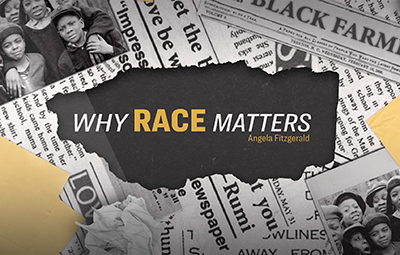
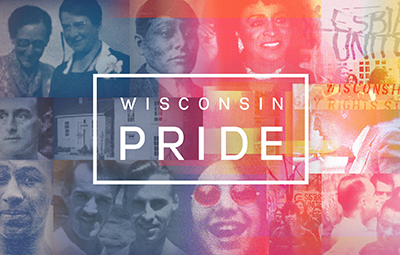




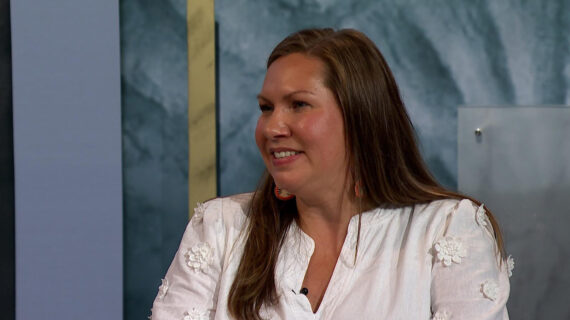
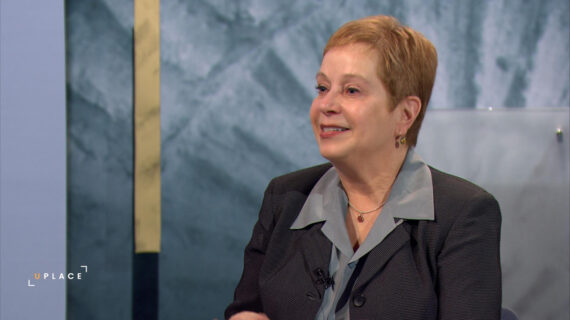
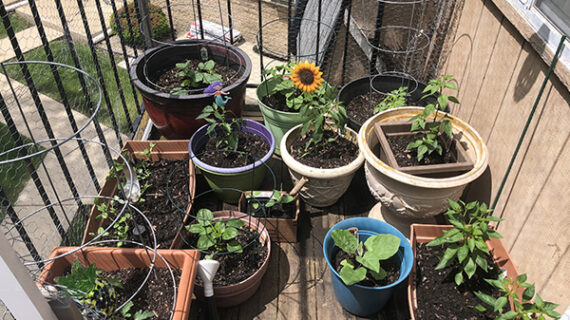
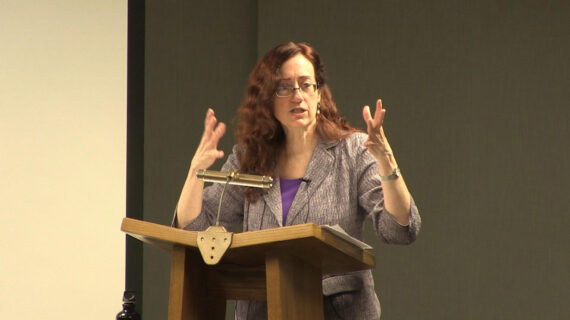
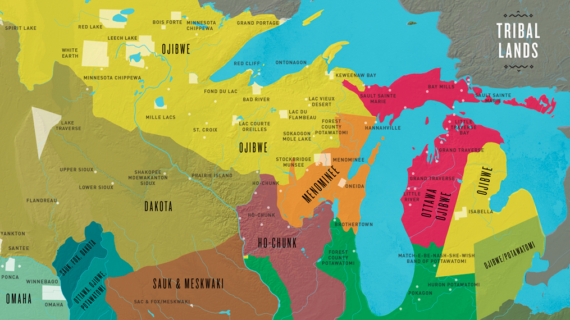
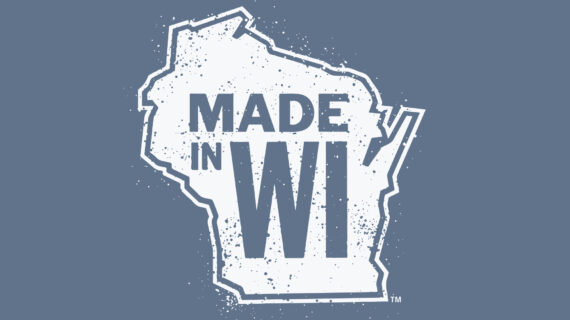

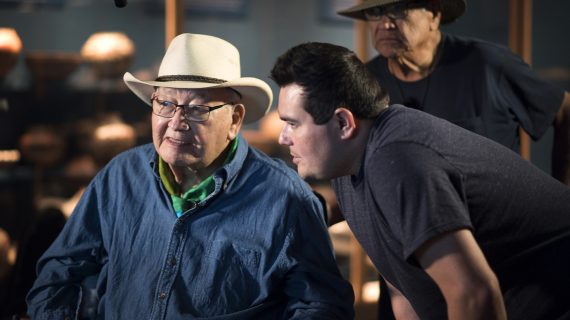

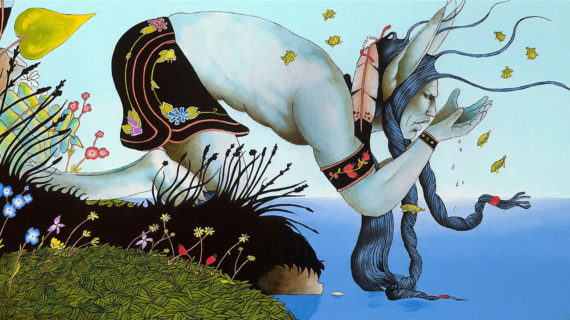

Follow Us